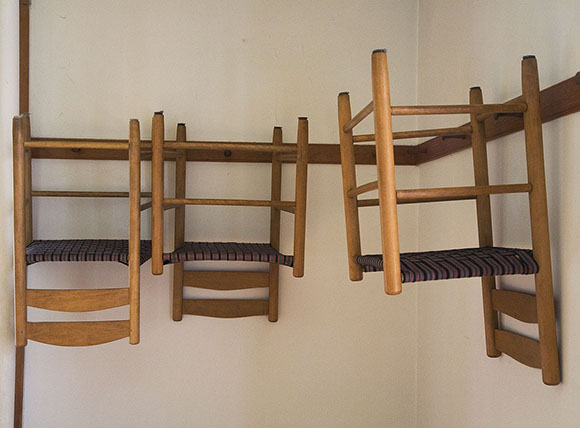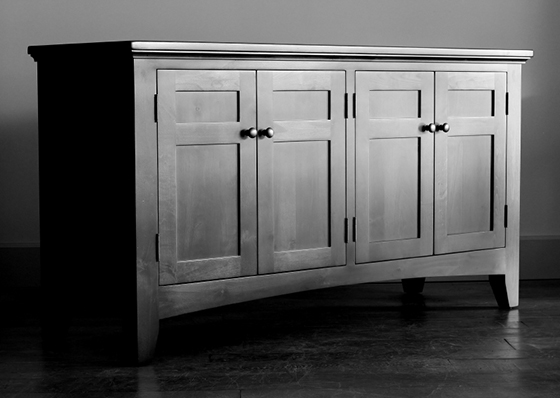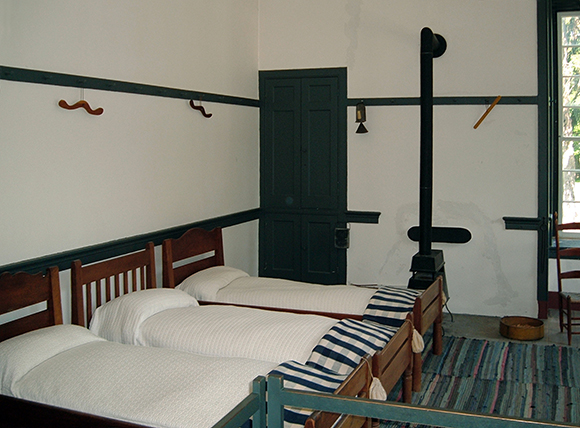
The first thing that comes to mind when you think of Shaker furniture is a stark and austere interior that is almost off-putting: brown table and chairs, white wall and wood floors, white basin to wash in, a broom leaning against the wall and a lone ball of wool for a patchwork blanket. The only thing missing is a cat to play with the ball of wool.
Yet Shaker craftsmen are recognized as masters of design among our Southern neighbours. Reputable cabinetmakers attempt to recreate works exposed in various museums. Pieces from the period are worth a fortune.
It’s true that compared to contemporary design highlighted by glass and steel, the Shaker style is a poor child. Simple and minimalist, it’s a perfect example of voluntary simplicity. At least that’s our impression. But take a closer look and the impression already seems more fitting.
First, it’s wrong to claim that brown in the only colour in the Shaker palette. Books devoted to this style of decoration are filled with violet, yellow, red and blue furniture. Sometimes the brown of a cupboard or cabinet stand out against a brightly-coloured panel attached to the wall. For example, a brown box lying on an orange background.
Those who have seen the Steven Spielberg film Schindler’s List will remember the little girl dressed in red. Why? Because the film is in black and white. The girl’s red dress stands out on the screen’s dark background. The effect is striking. The impact of a bright colour like red and orange in a Shaker kitchen or bedroom comes from the same principle.
While skimming through the book Storage and Shelving, The Shaker Way, by cabinetmaker Kerry Pierce, devoted to building Shaker furniture, we rediscovered the practical genius of this religious community’s craftsmen: the key organizer hanging on the wall, storage furniture for blankets, the jewelry box, the trunk at the foot of the bed, the famous big, solid cupboards. This furniture is renowned for being light, as the Shakers mainly used pine. The famous oval boxes are probably the most representative symbol of the Shaker style.


The Shaker style also acknowledges the famous hooks hung around a room. Known as Peg Rails, this organizing system is disarmingly useful. It can be used to hang clothes, tools, ropes and other accessories. There are also the chairs and, in many cases, a miniature cupboard and bookshelf hanging over a void. This frees up the entire floor, which provides more room to move and for housework. Apparently Shakers abhorred dust and were obsessed by cleanliness.
If you adopt the Shaker style, nothing prevents you from using it as a base and adding more modern items without going too contemporary. Many American owners have succeeded.
The Shakers were a religious community that flourished in New England in the 1700-1800s. They preferred an austere lifestyle, practiced celibacy and believed in equality of the sexes. Their education system was the envy of many parents in the surrounding villages.
They shouldn’t be confused with the Amish, most of whom live in Pennsylvania.
References:
Storage and Shelving, the Shaker Way, Kerry Pierce, Popular Woodworking Books, Cincinnati, Ohio, 2009, 143 pages
English Wikipedia articles on Shakers and Furniture of Shakers
Photos: iStockphoto, Wikipedia Richard Taylor (chairs) and Wikipedia Tom Allen (bedroom)